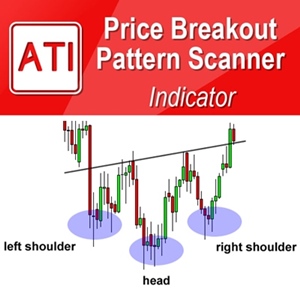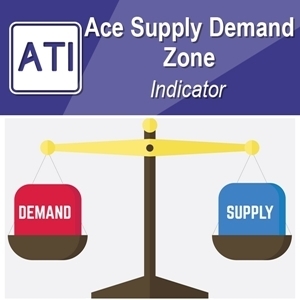Trading Elliott Wave Pattern
Trading Elliott Wave patterns requires a good understanding of technical analysis, chart reading skills, and experience in identifying wave structures accurately. It’s worth noting that while Elliott Wave Theory can provide valuable insights into market behavior, it’s not without criticism. Some traders argue that wave interpretation can be subjective, and it may not always provide reliable predictions due to the complexity of market dynamics and the influence of external factors. Therefore, it’s often used in conjunction with other technical indicators and risk management strategies to make informed trading decisions.
Elliott Wave Theory is a method of technical analysis that attempts to predict future price movements by identifying patterns in market price charts. It was developed by Ralph Nelson Elliott in the 1930s. According to Elliott, market price movements follow a repetitive pattern of waves, which he termed as “impulse waves” and “corrective waves”.
Trading Elliott Wave Pattern can be tricky if you do not have any knowedge about Elliott Wave Theory. Hence, we will spend some time to explain some basic principle of Elliott Wave Theory commonly used in Forex and Stock market trading. Elliott wave patterns are the common geometric patterns used by Forex and stock market trading. In 1980s and 1990s, this technique was considered as rather complex trading strategy. However, as with the development of personal computer, we have many automated tools to detect Elliott Wave patterns. This means that this sophisticated trading strategy is accessible by average trader with the help of automated tools. Here’s a brief overview of the Elliott Wave pattern:
- Impulse Waves (Trend Moves): Impulse waves represent the main direction of the market trend. They consist of five sub-waves, labeled as 1, 2, 3, 4, and 5. In an uptrend, waves 1, 3, and 5 move upward, while waves 2 and 4 act as corrections. In a downtrend, the sequence is reversed.
- Corrective Waves (Counter-Trend Moves): Corrective waves move against the main trend and consist of three sub-waves, labeled as A, B, and C. Corrective waves typically retrace a portion of the preceding impulse wave. There are various types of corrective patterns, including zigzags, flats, and triangles.
- Wave Degrees: Elliott Wave Theory also categorizes waves based on their size and duration, which are referred to as degrees. These degrees range from the largest (Grand Supercycle) to the smallest (Subminuette). Understanding wave degrees helps analysts determine the context of the current price movement within the overall trend.
- Wave Rules and Guidelines: Elliott Wave Theory comes with a set of rules and guidelines to help practitioners identify valid wave counts and patterns. These rules include guidelines on wave relationships, wave retracement levels, wave equality, and wave alternation.
- Fibonacci Ratio: Elliott Wave Theory often incorporates Fibonacci retracement and extension levels to identify potential reversal or continuation points in price movements. Fibonacci ratios, such as 0.618 and 1.618, are commonly used to determine the likely termination points of waves.
Elliott Wave theory can be beneficial to predict the market movement if they are used correctly. Junior traders are often fear to use Elliott Wave because their complexity. From my experience, Elliott wave is not a rocket science, anyone can probably learn how to use the technique with some commitment. However, not all the book and educational materials will teach them in the scientific way. If we are just looking at the three rules from the original Wave principle only, then there are definitely some rooms where subjective judgement can play in our wave counting. This makes starters to give up the Elliott Wave practice too quickly. Fortunately, there are some additional tools to overcome the subjectivity in our wave counting. First tool but the most important tool is definitely the three wave rules from the original Wave Principle. They can be used as the most important guideline for the wave counting. Below we describe the three rules:
Rule 1: Wave 2 can never retrace more than 100 percent of wave 1.
Rule 2: Wave 4 may never end in the price territory of wave 1.
Rule 3: Out of the three impulse waves (i.e. wave 1, 3 and 5), wave 3 can never the shortest.
Second tool is the Fibonacci ratio. As in the Harmonic pattern detection, Fibonacci ratio can play an important role in our wave counting because they describe the wavelength of each wave in regards to their neighbouring wave. For example, the following relationship is often found among the five wave of the impulse wave. Depending on which wave is extended among wave one, three and five, the Fibonacci ratios are different. Most of time, the extension of wave 3 is most frequently observed in the real world trading
Unless wave 1 is extended, wave 4 often divides five impulse waves into the Golden Section. If the wave 5 is not extended, the price range from the starting point of wave 1 to the ending point of wave 4 make up 61.8% of the overall height of the impulse wave. If wave 5 is extended, then the price range from the starting point of wave 1 to the ending point of wave 4 make up 38.2% of the overall height of the impulse wave. These two rules are rough guideline. Sometime, trader can observe some cases where these two rules are not hold true. Personally, I normally place the Fibonacci ratio relationship before this Golden Section rule. However, the priority between these two rules might depend on the preference of traders.
The corrective wave is often retrace 61.8% or 32.8% against the size of previous impulse wave. In general, Elliott suggested that corrective wave 2 and wave 4 have the alternating relationship. If wave 2 is simple, then wave 4 is complex. Likewise, if wave 2 is complex, then wave 4 is simple. A “Simple” correction means only one wave structure whereas a “Complex” correction means three corrective wave structures. Furthermore, if wave 2 is sharp correction, then wave 4 can be sideways correction. Likewise, if wave 2 is sideways correction, then wave 4 can be sharp correction.
Third tool, which can be helpful in overcoming the subjectivity, is using template. Template is a rough wave counting drawn in your chart using some sort of very simple automatic algorithm. Even though, the template does not provide you the perfect counting, the template can be helpful in eliminating thousands of alternative possibilities in first place. We found that this makes the wave counting more accurate and easier. The Peak Trough analysis is one of the good templates to start with wave counting. You can always create your own alternative version of the template if you wish. However, we will stick with the Peak Trough analysis as our basic template in this book. Trader can use both Zig Zag and the modified Fractal indicator for wave counting task. The modified Fractal indicator can show more peaks and troughs for you to work with. However, it is still good approach for your wave counting.
Here are the list of several articles giving you some insight about Elliott Wave pattern trading.
1) How Elliott Wave can Improve your Trading Performance
https://algotrading-investment.com/2018/10/25/how-elliott-wave-can-improve-your-trading-performance/
2) Elliott Wave Trend-Basic Tutorial 1
https://algotrading-investment.com/2019/04/14/elliott-wave-trend-basic-tutorial-1/
3) Elliott Wave Trend
Elliott Wave Trend is extremely powerful indicator. Allow you to perform Elliott wave counting as well as Elliott wave pattern detection. On top of them, it provides built in accurate support and resistance system to improve your trading performance. You can watch this YouTube Video to feel how the Elliott Wave Indicator look like:
https://www.youtube.com/watch?v=Oftml-JKyKM
Here is the landing page for Elliott Wave Trend.
https://www.mql5.com/en/market/product/16479
https://www.mql5.com/en/market/product/16472
https://algotrading-investment.com/portfolio-item/elliott-wave-trend/
4) X3 Chart Pattern Scanner
X3 Chart Pattern Scanner is not entirely Elliott wave tool but it has some Elliott Wave pattern features in it (it can detect Harmonic Patterns, Elliott Wave Patterns, X3 Patterns). Primarily, X3 Chart Pattern Scanner is specialized tools in detecting the Chart Patterns including Harmonic Pattern and Elliott Wave Patterns. It is great tool if you want to use both Harmonic Pattern and Elliott Wave patterns in one tool. In addition, the pattern detection algorithm inside X3 Chart Pattern Scanner is customizable using RECF notation shown in this link below:
https://algotrading-investment.com/2019/07/09/defining-profitable-patterns/
In addition, you can have a look at the YouTube Video to understand the X3 Chart Pattern Scanner better.
https://www.youtube.com/watch?v=uMlmMquefGQ
Here is the link to Profitable Pattern Scanner
https://www.mql5.com/en/market/product/41993
https://www.mql5.com/en/market/product/41992
https://algotrading-investment.com/portfolio-item/profitable-pattern-scanner/
Related Products







